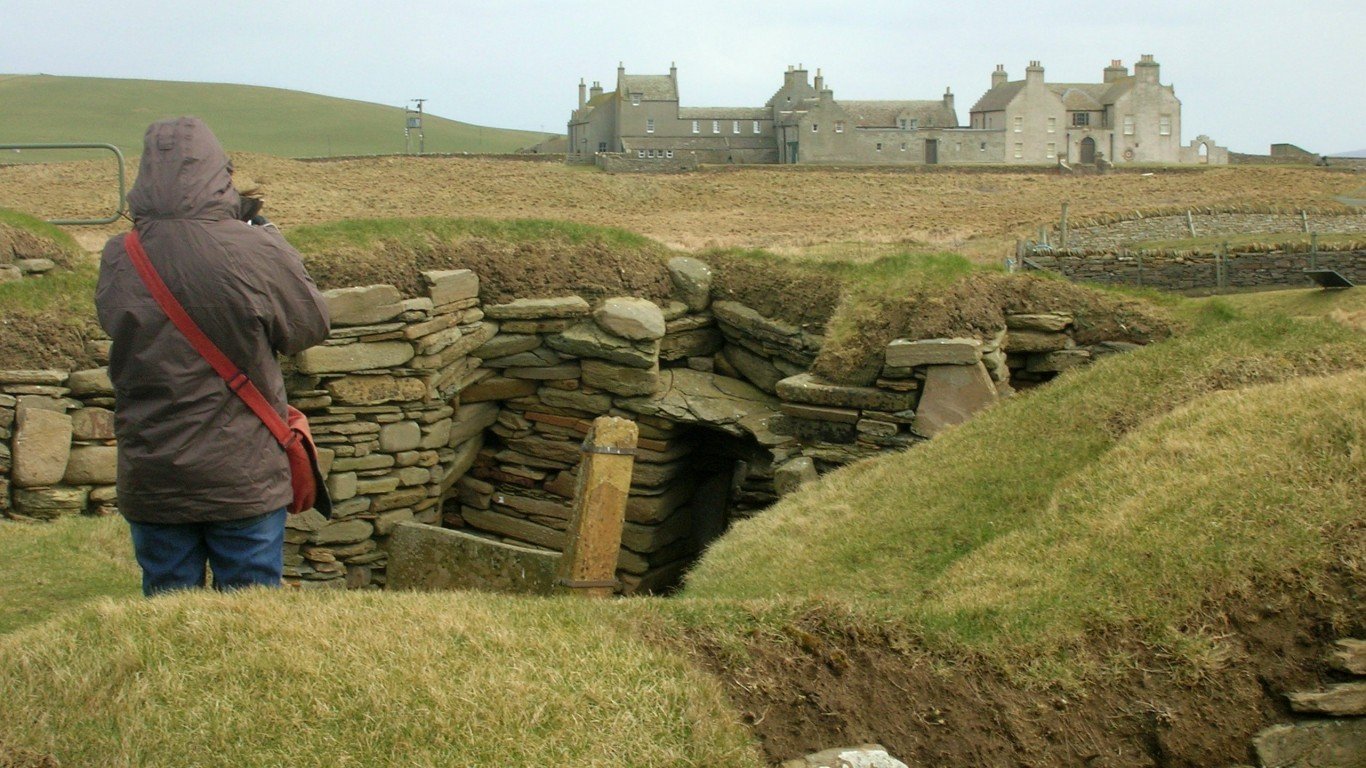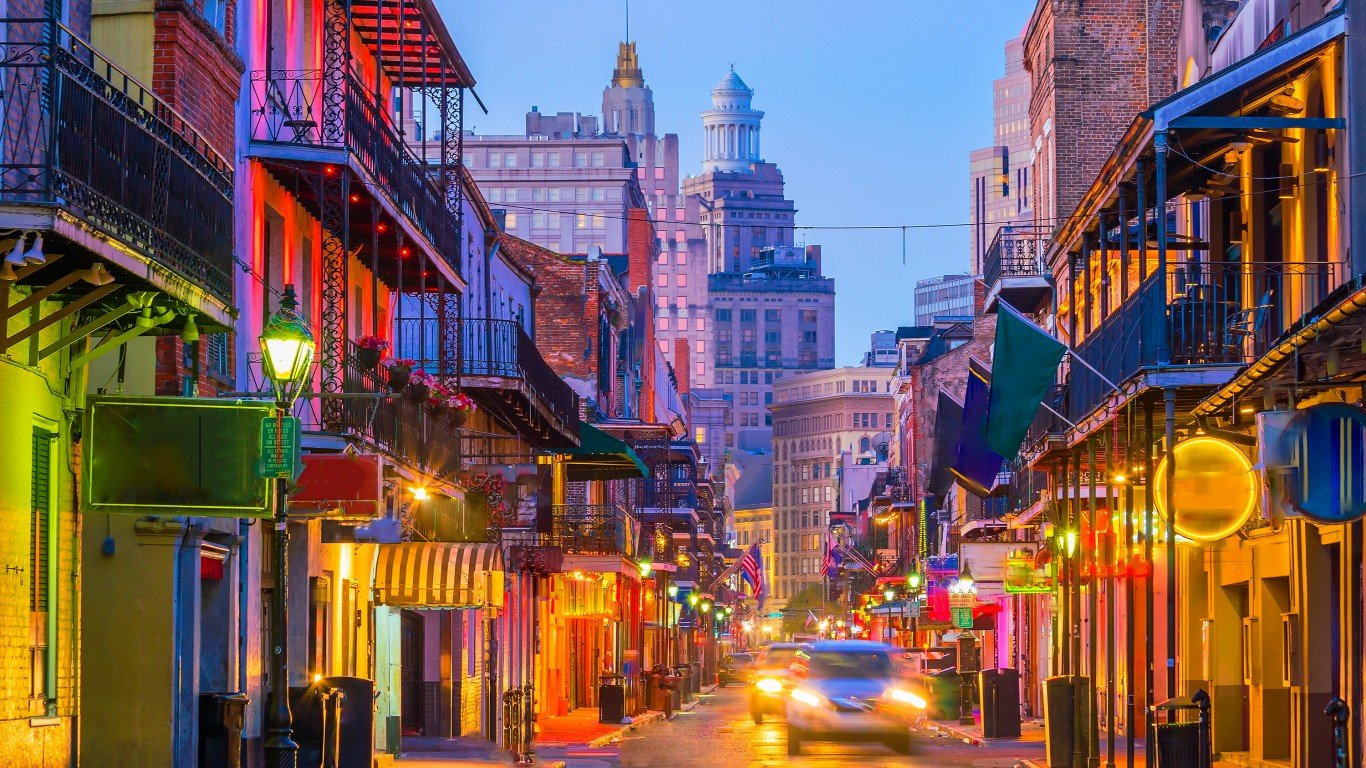
New Orleans
> Location: New Orleans, Louisiana, US
Long known for its raucous festivities, New Orleans is also remembered for one of the most tragic weather and climate-related events of modern times. With its protective levees collapsing, the city was inundated and the poorest neighborhoods destroyed by Hurricane Katrina in 2005. The city suffered 1,800 deaths and an estimated $150 billion in damage. Its most famous neighborhood, the historic Latin Quarter, suffered only wind damage because of its higher elevation, but the entire city and its coastal neighbors remain at high risk from the future impacts of climate change.
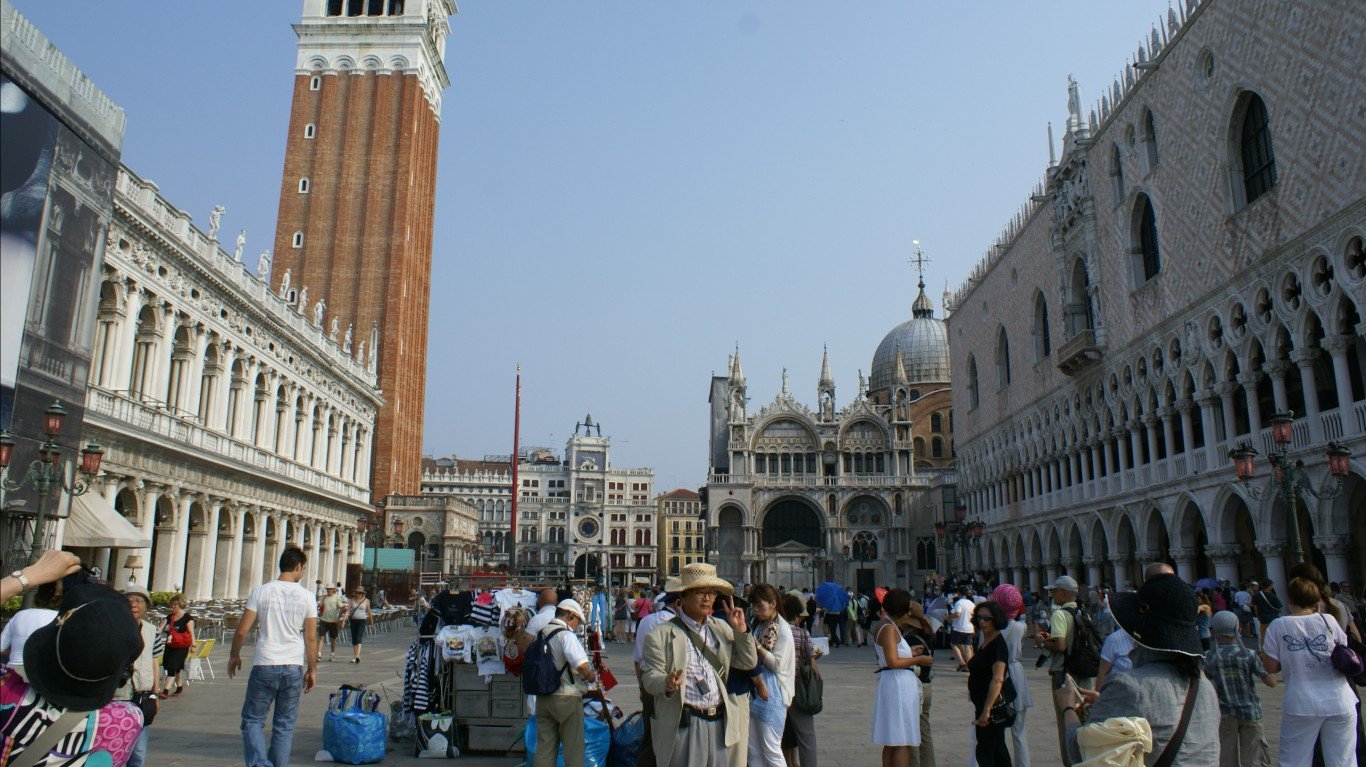
St. Mark’s Square
> Location: Venice, Italy
The city of Venice is the poster child for the calamity of sea level rise, and St. Mark’s Square is the most recognizable landmark in the sinking city. It is also Venice’s lowest spot, 30 inches above sea level. St. Mark’s Basilica, which stands 4.5 inches above the piazza, has been flooded six times in the last 1200 years, with four of the floods occurring in the last 20.
Skara Brae
> Location: Orkney Peninsula, Scotland
Older than the pyramids and Stonehenge are the ruins of Skara Brae, one of the world’s best examples of a stone age village. Situated close to the coastline and only feet above the sea, it has nonetheless survived 5,000 years of weather, storms, and battering by the ocean waves. But as air and ocean temperatures rise, storms become more threatening, and the sea rises, the land at either end of the village’s protective sea wall is eroding. Another ancient landmark in the region, the iron age buildings at Hodgalee already been overcome with sea water.
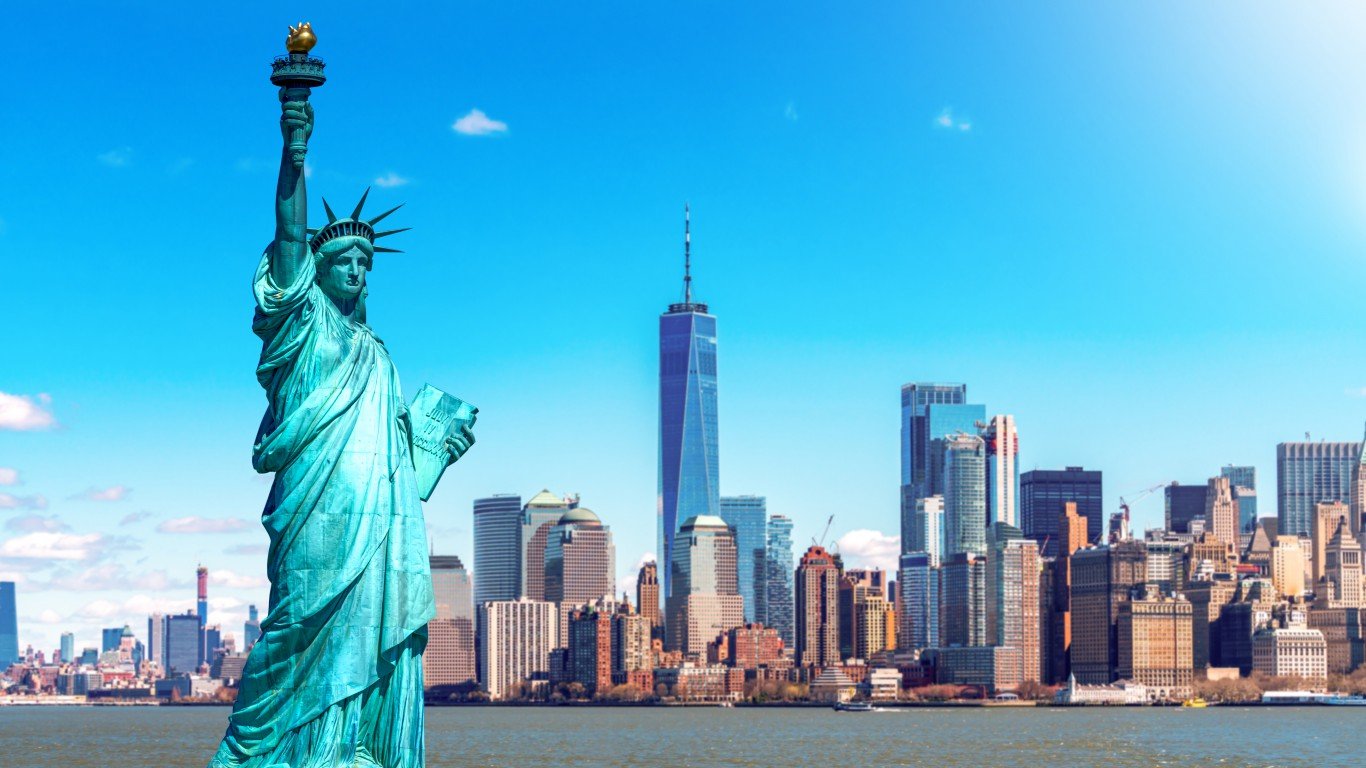
Statue of Liberty
> Location: New York, New York, US
In October of 2013, New York City experienced the worst storm in its history, Superstorm Sandy. Most of Liberty and Ellis Islands were inundated. Damages amounted to $77 million, with operating systems ruined and a caretakers’ brick house destroyed. With the understanding that the damage was attributable to the growing menace of climate change and sea level rise, the house will not be rebuilt.
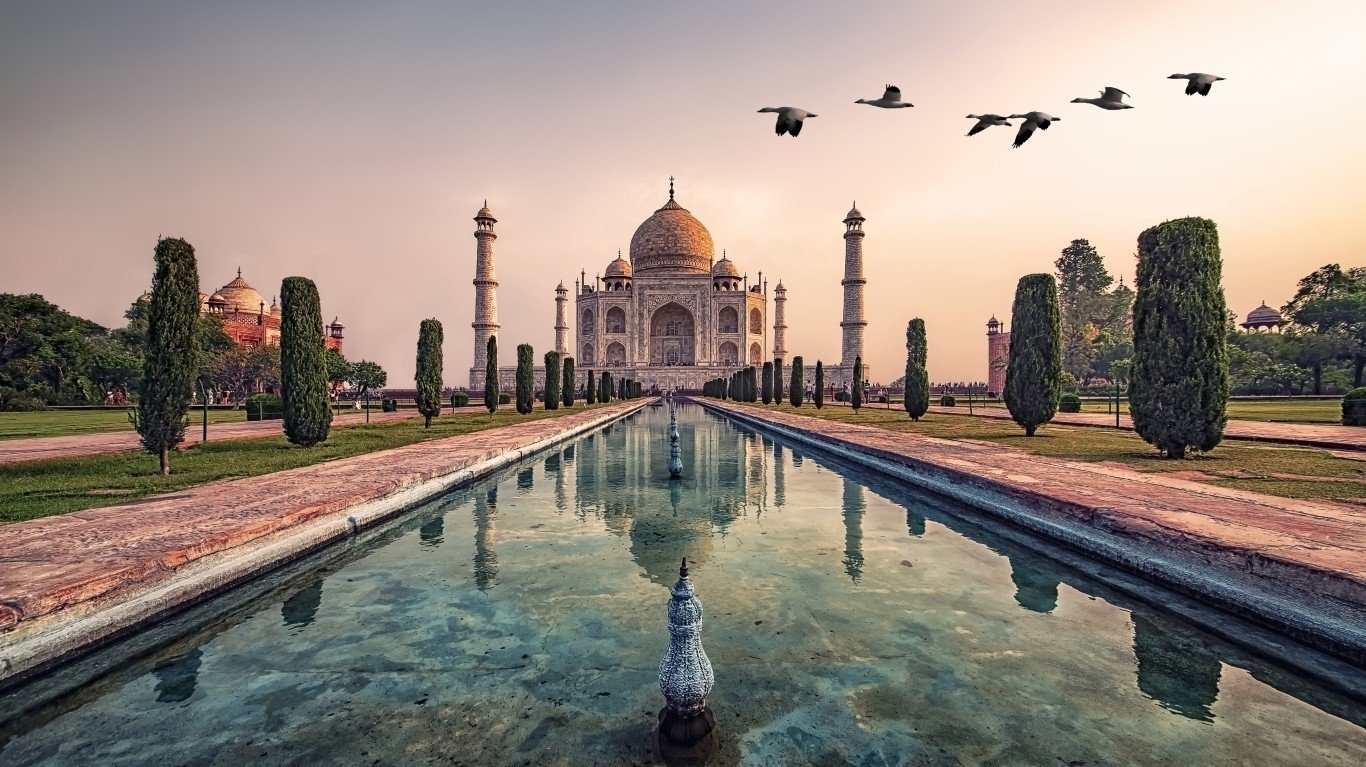
Taj Mahal
> Location: Agra, India
One of the world’s most stunning and recognizable buildings, the Taj Mahal in Agra, India, has lost its surface radiance to modern pollution. Automobiles, industry, and a local oil refinery have fueled the ravages of acid rain, which, paired with naturally occurring oxidation, is turning the monument’s once lustrous white facade a pale yellow.

 24/7 Tempo
24/7 Tempo